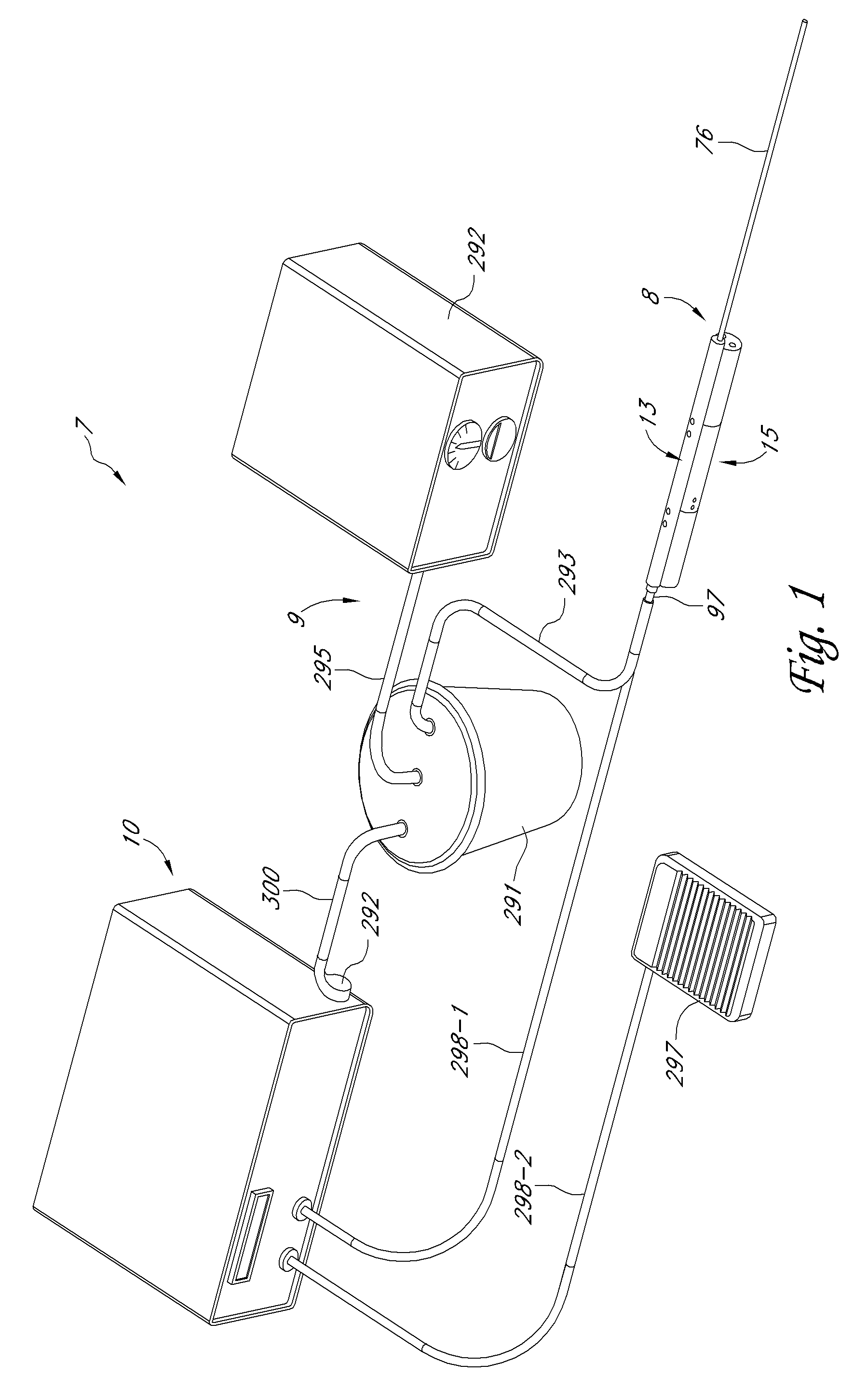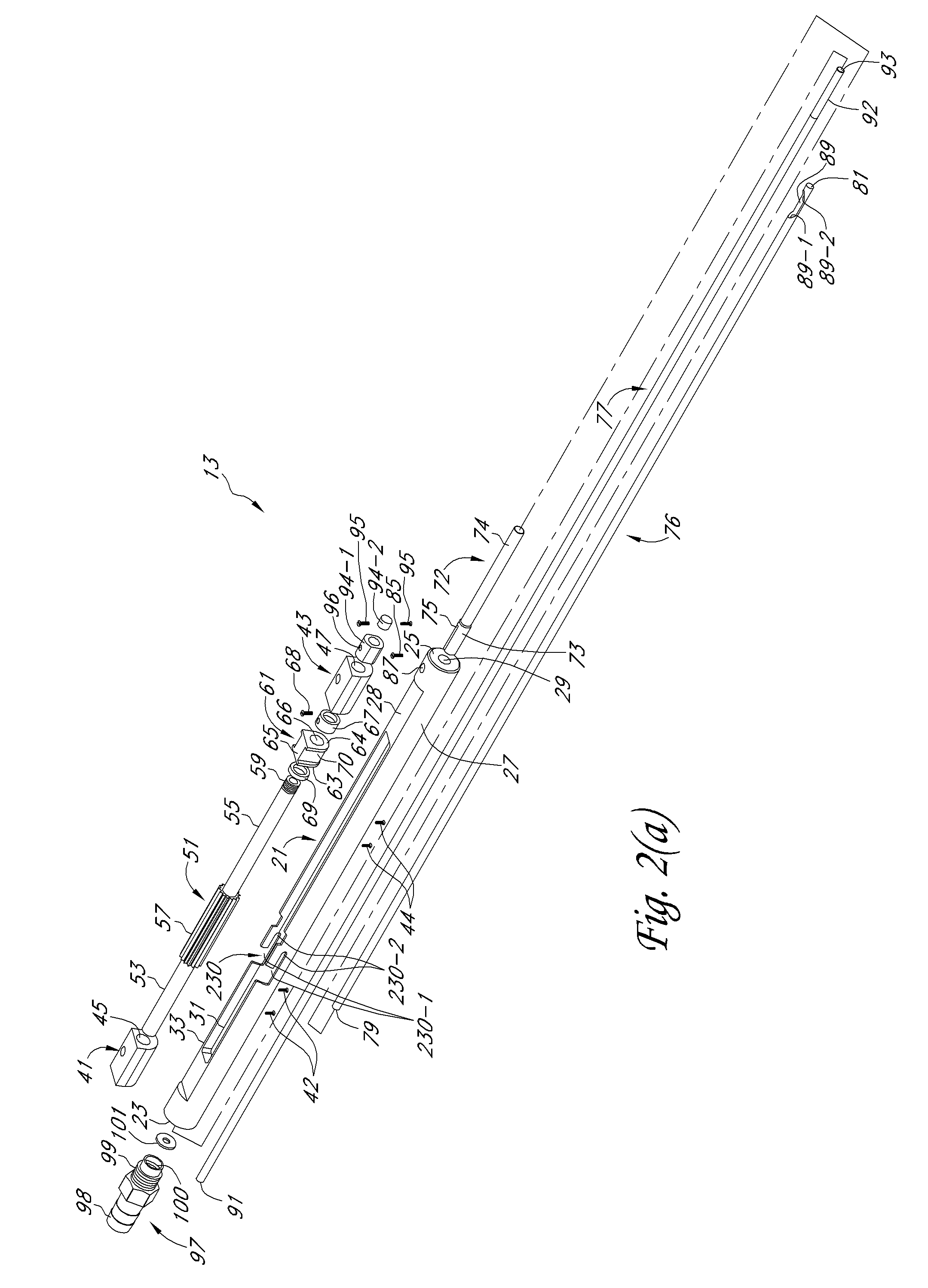Method, system and device for tissue removal
a tissue and system technology, applied in the field of tissue removal methods, systems and devices, can solve the problems of reproductive dysfunction, prolonged or heavy menstrual bleeding, pelvic pressure or pain, etc., and achieve the effect of reducing the risk of infection
- Summary
- Abstract
- Description
- Claims
- Application Information
AI Technical Summary
Benefits of technology
Problems solved by technology
Method used
Image
Examples
Embodiment Construction
[0074]The present invention is described below primarily in the context of instruments and procedures optimized for performing one or more therapeutic or diagnostic gynecologic or urologic procedures such as the removal of uterine fibroids or other abnormal uterine tissue. However, the morcellators and related procedures of the present invention may be used in a wide variety of applications throughout the body, through a variety of access pathways.
[0075]For example, the morcellators of the present invention can be optimized for use via open surgery, less invasive access such as laparoscopic access, or minimally invasive procedures such as via percutaneous access. In addition, the devices of the present invention can be configured for access to a therapeutic or diagnostic site via any of the body's natural openings to accomplish access via the ears, nose, mouth, and via trans rectal, urethral and vaginal approach.
[0076]In addition to the performance of one or more gynecologic and uro...
PUM
 Login to View More
Login to View More Abstract
Description
Claims
Application Information
 Login to View More
Login to View More - R&D
- Intellectual Property
- Life Sciences
- Materials
- Tech Scout
- Unparalleled Data Quality
- Higher Quality Content
- 60% Fewer Hallucinations
Browse by: Latest US Patents, China's latest patents, Technical Efficacy Thesaurus, Application Domain, Technology Topic, Popular Technical Reports.
© 2025 PatSnap. All rights reserved.Legal|Privacy policy|Modern Slavery Act Transparency Statement|Sitemap|About US| Contact US: help@patsnap.com



